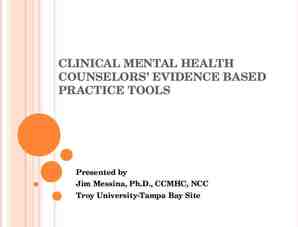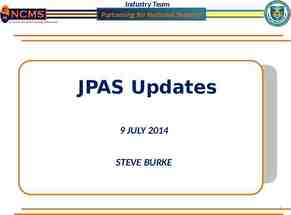Training in Psychological First Aid for Red Cross and Red Crescent
12 Slides1.09 MB
Training in Psychological First Aid for Red Cross and Red Crescent Societies Module 2 Basic PFA MYANMAR RED CROSS SOCIETY / IFRC
Psychological First Aid Module 2 Basic PFA TRA INI NG SCHEDU LE Time Training programme 08:30 – 09:15 1. Introduction 09:15 – 09:35 2. What is PFA? 09:35 – 09:45 3. Distressing events 09:45 – 10:05 4. Reactions to distressing events 10:05 – 10:20 BREAK 10:20 – 10:35 5. Developing case studies 10:35 – 12:50 6. ‘Look, Listen, Link’ 12:50 – 13:30 LUNCH 13:30 – 14:30 7. PFA role plays 14:30 – 14:45 BREAK 14:45 – 16:45 8. Complex situations and reactions 16:45 – 17:30 9. Self-care 17:30 – 17:45 10. Workshop close
Psychological First Aid Module 2 Basic PFA PFA is comforting someone who in distress and helping them feel safe and calm assessing needs and concerns protecting people from further harm providing emotional support helping to address immediate basic needs, such as food and water, a blanket or a temporary place to stay helping people access information, services and social support.
Psychological First Aid Module 2 Basic PFA PFA is not something only professionals do professional counselling or therapy encouraging a detailed discussion of the event that has caused the distress asking someone to analyze what has happened to them pressing someone for details on what happened pressuring people to share their feelings and reactions to an event.
Psychological First Aid Module 2 Basic PFA Safety Avoid putting people at further risk as a result of your actions. Make sure to the best of your ability that the people you help are safe and protect them from physical or psychological harm. Dignity Treat people with respect and in accordance with their cultural and social norms. Rights Make sure people can access help fairly and without discrimination. Help people to claim their rights and access available support. Act only in the best interest of any person you encounter.
Psychological First Aid Module 2 Basic PFA Questions on reactions How do you think these three people would react in this situation? How do people usually react when they are in distress? Does everyone react in the same way? How will Fredericka react, compared to Anton or Diane?
Psychological First Aid Module 2 Basic PFA Steps to creating a case study 1. Choose a post-it note with a distressing event. 2. Decide who the person in distress is. 3. Provide information on the context. 4. Brainstorm possible reactions. Choose four and add to form. 5. Check the details one more time.
Psychological First Aid Module 2 Basic PFA LOOK for information on what has happened and is happening who needs help safety and security risks physical injuries immediate basic and practical needs emotional reactions.
Psychological First Aid Module 2 Basic PFA Case study questions How would you apply the LOOK actions in this situation? What are common reactions the woman could have to such an experience? What kinds of severe reactions could the woman have to such an experience?
Psychological First Aid Module 2 Basic PFA LISTEN refers to how the helper approaches someone introduces oneself pays attention and listens actively accepts others’ feelings calms the person in distress asks about needs and concerns helps the person in distress find solutions to their immediate needs and problems.
Psychological First Aid Module 2 Basic PFA LINK is helping people access information connect with loved ones and social support tackle practical problems access services and other help.
Psychological First Aid Module 2 Basic PFA Giving helpful feedback Step 1 The observer asks the PFA helper to reflect on: What went well? What would he or she do differently next time? Step 2 The observer gives his or her feedback to the PFA helper: Start with positive feedback andbe specific in what went well. Give specific feedback about areas to improve (if necessary). End with an overall positive comment. Step 2 The person who acted in distress gives feedback to the PFA helper Start with positive feedback and be specific in what went well. Give specific feedback about areas to improve (if necessary). End with an overall positive comment.

















